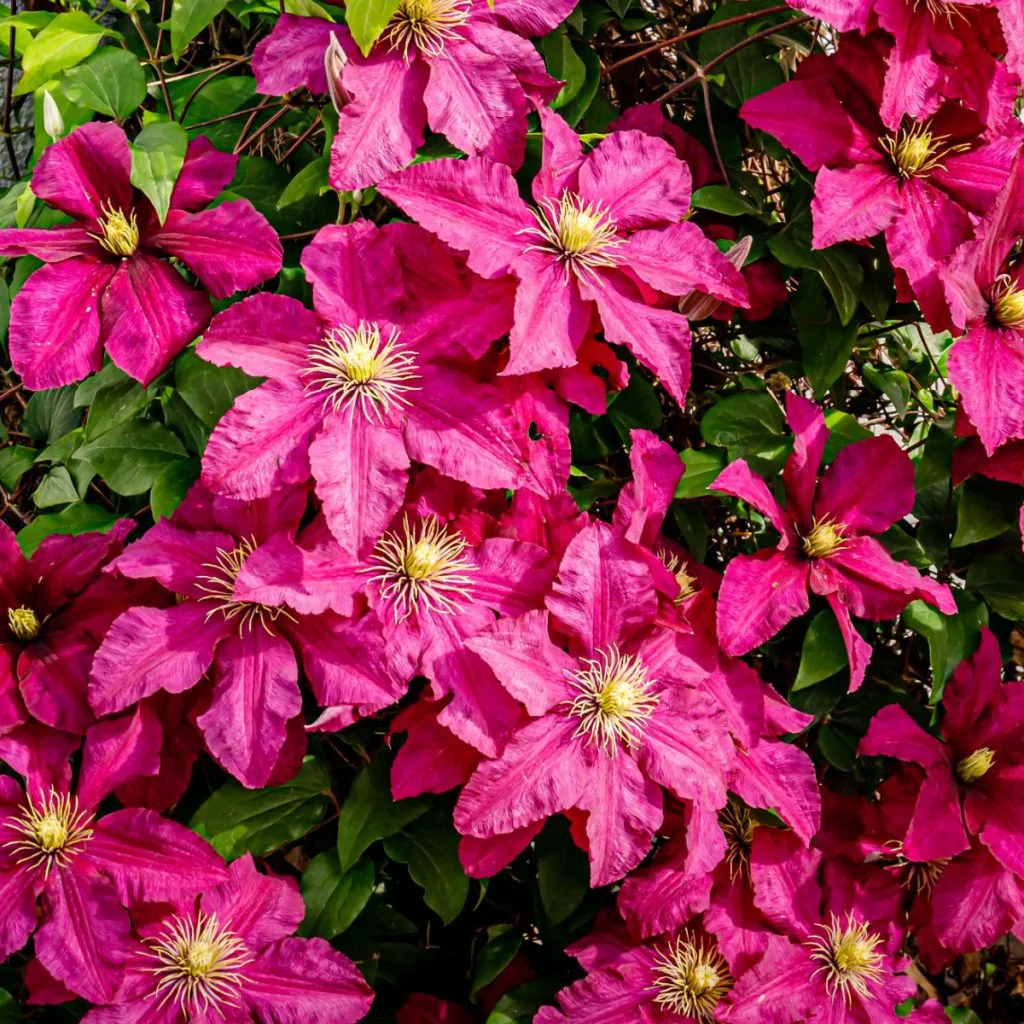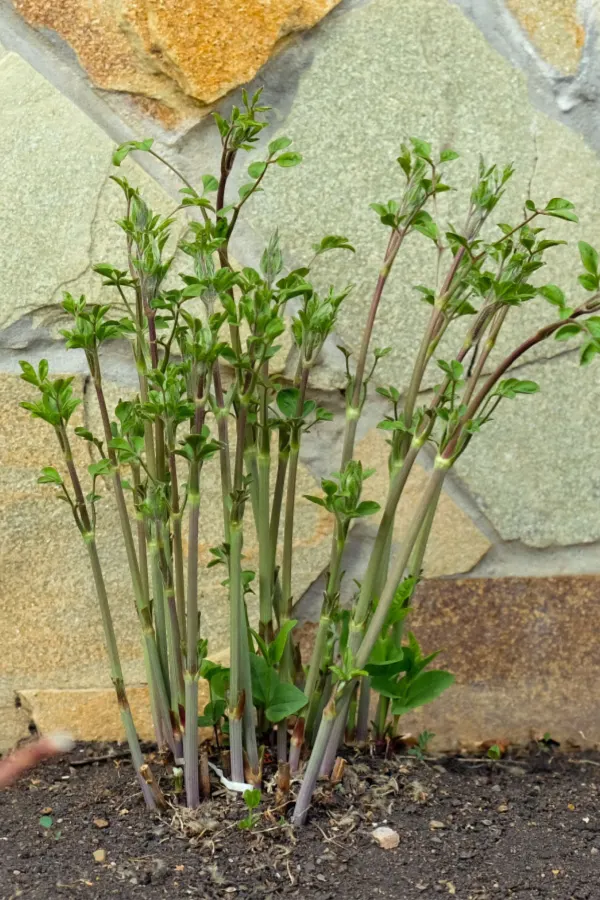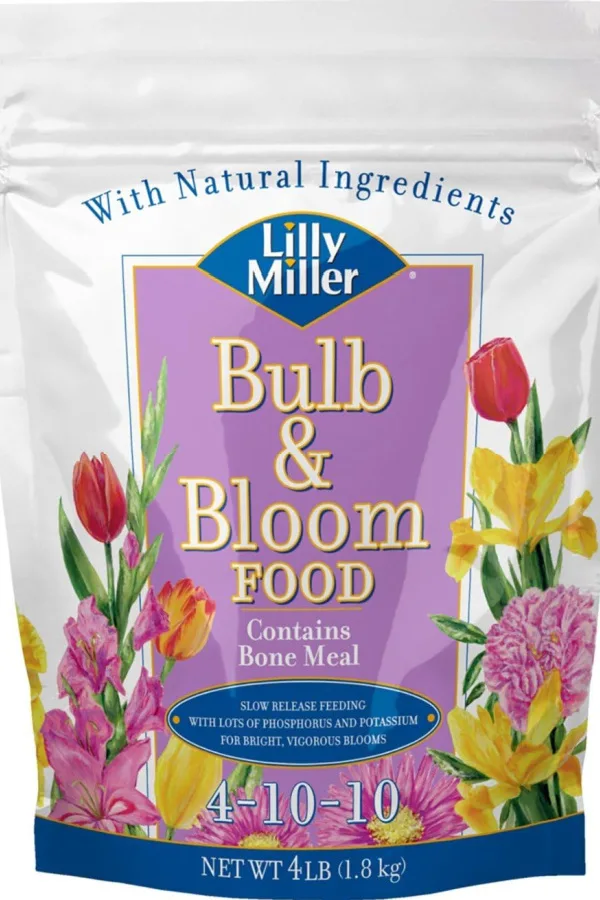One of the best ways to make sure your clematis has the nutrients to bloom big this year is to make sure it has the energy it needs right from the start – and the easiest way to do that is to fertilize your clematis in early spring!
Is there anything more beautiful than a clematis in full bloom? Whether climbing up a trellis, or wrapping around a light post, fence or arbor – clematis can light up the landscape. Not only are the star shaped flowers of clematis impressive – they can also be quite huge. In fact, many varieties can have flowers as large as six inches in diameter!
But to really get the most from your clematis, it’s important to get them off to a fast start in the spring – and that means giving them the energy they need to create a massive set of buds for future blooms. But what you feed your clematis matters greatly. Especially when it comes to blooming.

When Clematis Struggle To Bloom – How To Fertilize Clematis In Spring
When clematis struggle to bloom with gusto, or even fail to bloom entirely, it usually comes down to one of three issues. The first is that the plant is simply too young and hasn’t developed enough. This is quite common among clematis that have only been in the ground for a year.
Another reason clematis fail to bloom is that they were improperly pruned. Unfortunately, many clematis varieties bloom on old wood, and if you cut them back at the wrong time, you also cut off future blooms. See: How To Care For Clematis – Knowing When To Prune.
But the third and most common reason clematis fail to bloom is because of the make-up of the nutrients in the soil where they grow. Sometimes it’s because the soil lacks the nutrients they need. And other times, it’s because the soil has an overabundance of nutrients that can prevent it from blooming altogether.
The good news is that it’s easy to make sure you create the perfect nutrient balance in the soil. Especially when you use the right fertilizer and apply it at just the right time!
How To Fertilize Clematis In Spring
Giving Your Clematis The Right Mix Of Nutrients
Although there is a long list of micro nutrients that clematis need and use, the three most important when it comes to overall health and blooming potential are Nitrogen (N), Phosphorous (P), and Potassium (K).

Coincidentally, those three nutrients also happen to be the foundation of nearly every fertilizer on the market. In fact, whenever you purchase fertilizer, the bag or bottle will almost always have the ratios of these three important nutrients (N-P-K) right on the label.
So how do the three nutrients work when it comes to helping clematis grow and bloom? Nitrogen helps with greening the foliage up and overall growth. Phosphorous helps to develop strong roots and form fruit. Meanwhile, potassium is vital for helping to form blooms and flowers – and fighting off disease.
Although they are all important, for clematis, it’s the balance of the three that matters most for blooming. Clematis needs to have a fertilizer that is higher in phosphorous and potassium and lower in nitrogen to bloom bigger and better.
The plant does need some nitrogen for strong growth and foliage. But, if it gets too much, the plant will use the extra power to only grow bigger. All at the expense of blooming!
This is exactly why it’s best to never feed your clematis an all-purpose 10-10-10 or 15-15-15 fertilizer. At equal amounts, the nitrogen is simply too strong. At those levels, clematis will concentrate more on growing, resulting in fewer blooms.

Selecting The Right Fertilizer For Clematis
So what is the best N-P-K ratio to fertilize your clematis with? And when and how should you apply it?
For the best possible blooms, look for a fertilize with double the amount of phosphorous and potassium versus nitrogen. This will allow enough nitrogen to help green up the clematis and fill out its canopy of foliage, but not so much that it hurts its blooming potential.
Meanwhile, having higher amounts of phosphorous and potassium will then help drive bigger bud production and better flowering. Many bulbs fertilizers will have this ratio and also include bone meal, which also helps with bloom production.
Bulb fertilizers are also a great choice because they come in granular form – which makes early spring fertilizing a snap! Affiliate Product Link: Lilly Miller Bulb & Bloom Food 4-10-10
When & How To Fertilize Clematis
To promote strong flowering, you will want to apply your first dose of fertilizer right before or just as your clematis begins to come out of dormancy.

The timing of this first dose is extremely important. It needs to be applied before your clematis is fully out. Why? Because if it goes on after your clematis has a full canopy of foliage, the plant will use the additional energy only for growing larger – and not for flowering.
To apply, sprinkle about 1/2 to 3/4 cup of fertilizer around the base of your plants. If you have mulch down, pull it back to allow the fertilizer granules to make contact with the soil. Gently water the granules in to help activate and set them, and then re-mulch.
In addition to the first dose, your clematis should be fertilized every 4 weeks after until mid summer. You can use the same fertilizer and dosing instructions for each application.
When To Stop Fertilizing Clematis
Once late summer hits, it’s important to stop fertilizing. Giving clematis additional nutrients late in the year can actually put the plant at risk of winter damage. This is because the plant uses the energy to promote late season growth that can leave the root structure weak.
All that is left in the fall is to put your clematis to bed with a protective layer of mulch – and your plant should be more than ready for the following spring. Here is to fertilizing your clematis this spring and summer for big blooms!
Simple Garden Life
Follow Our Facebook Page For Even More Great Tips! Simple Garden Life Facebook Page
Simple Garden Life is a website dedicated to keeping gardening fun, simple and enjoyable! We publish two new articles each week along with a new garden podcast episode every two weeks. This article may contain affiliate links.
